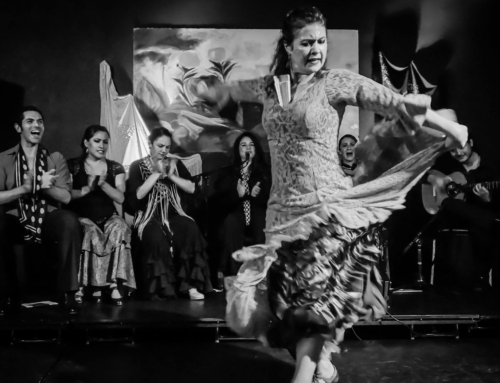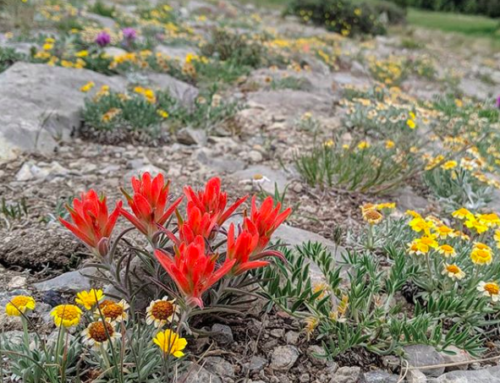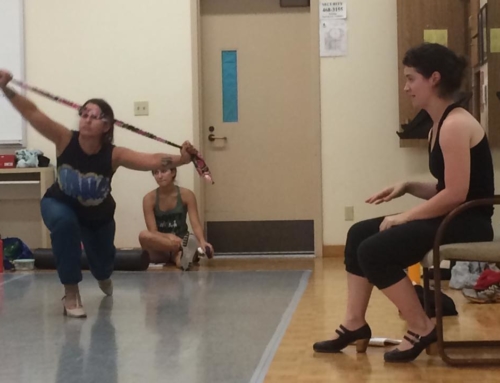Lineage in dance, and particularly in oral dance traditions, carries a great deal of weight. Without respect for those that passed the traditions on to us, we lose the essence of the art form. And without allowing our students to surpass us and find their artistic voice, the art form dies. We both carry stories from the past into the present and keep the art form relevant by adding our own voice to the mix.
I acknowledge my lineage in my bios, but even more so when I teach. As a flamenco teacher, I have an unwritten obligation to say where I got material. Steps, techniques, approaches do not just materialize out of thin air. And I make sure my students know where everything I pass on came from. Yes, I am the person who has synthesized my teachers’ information in my own way, and I have a unique collection of experiences, mentors, teachers, professional work, etc., that shapes my approach. I’ve sought out new opportunities, worked hard, spent hours working out steps to really understand them; I’ve developed my own approach to dance, created my own steps, built my own dances. That does not give me a right to throw aside those who came before me, and especially not those who taught me. If I don’t acknowledge the many roots that have created my particular tree, something is lost. Those roots are all connected for all of the flamencos in the world. That’s one of the many ways dance can connect people across the globe–even a simple step two people learned from the same teacher, perhaps at different times, in different places, connects those two people. As long as that heritage is acknowledged, dance connects us.
Giving credit to my teachers when I have learned from them does not mean I am simply copying and repeating what they did. That’s where the idea of synthesis comes into play. I have to understand what I have been taught, and take it into the realm of my own experiences, and into my own body. And then find a way to articulate that to my students. A colleague and choreographer I greatly admire posted this recently:
“Aprender de los demás para aplicar lo aprendido y comprendido desde tu propia experience, no es lo mismo ni tiene nada que ver con escoger lo que han hecho otros anteriormente y exponerlo tal cual, eso último se llama copiar. Si aprendes pero no comprendes, no aprendes, solo repites.” (To learn from others to apply what you’ve learned and understood from your own experience, is not the same and has nothing to do with taking what others before you have done and exhibit it as is, the latter is called copying. If you learn but you don’t understand, you’re not learning, you’re just repeating.) –Fernando Romero León
I think we have an obligation as teachers to say where we got steps or exercises if they were developed by others–in the same way academics cite their sources. If I take a step exactly as it was from someone else, I need to footnote that–to say who it came from. Even if I alter it slightly, I need to say it’s an altered version of so and so’s step. It speaks no less to who I am as an artist; if anything, it shows my experience and my ability to transfer knowledge (not just repeat). And instead of a bibliography, I have a biography and a resume where I can list who and where I studied, showing what has influenced my dancing.
It should also be a two way street. I hope my mentors and teachers are proud of me; I am thankful for all that they shared and taught me, and continue to teach me. At some point, a teacher/mentor has to let go of their students. They do not own them or control them. And I hope when I have students who continue to grow and succeed beyond me, I will be proud of them, and I do hope they surpass me, synthesizing a myriad of new experiences and challenging themselves, and ultimately finding their artistic voice.
This has been on my mind for several reasons. One of them being that recently, Jose Molina, an important figure in the New York and U.S. flamenco scene passed away. I barely knew him; his grace, kindness, and elegance brightened the studios at Flamenco Vivo. Even though I often saw him in around the NYC flamenco scene, I did not really know him–I never took a class from him. But two important mentors of mine danced in his company and got their professional starts with him. And I need to know that–I owe him a lot. Not because I ever really interacted with him, but because my NYC flamenco lineage (which is just one branch of my lineage) depends on him and the work he did.
I’ve also witnessed dancers betray their mentors, lie to them, steal work from them, and worse. There are unwritten ethics to dance, and following those codes shows respect to the art form (and therefore to ourselves as practitioners) and all those who came before us, our mentors and others.
I have also had to un-learn things I was taught. And un-learning is perhaps harder than never having learned something to begin with. In dance, this can be dangerous too–being taught technique that is actually harmful to your body. And that’s the only exception I can think of to not crediting someone with whom you studied for a significant period of time.





Leave A Comment